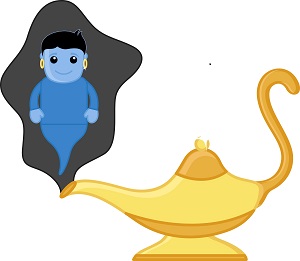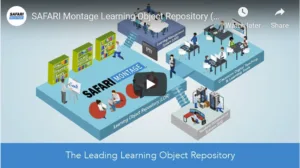Over the last five years I have reported about educators in significant numbers trolling the booths at numerous expositions, evidencing strong interest in having students produce educational content for their institutions. As a recent example of the level of interest, at last year’s ISTE ed-tech conference, more than 32 of the 66 VR-related sessions scheduled focused on student-created VR and not on commercially developed VR offerings.
 This is not a new concept to the display industry, which is already familiar with the emergence of the prosumer. The portmanteau prosumer first appeared in books around the year 1905, rising greatly in usage in the 1970s and 80s. At that time, McLuhan and Nevitt suggested that “the consumer would become a producer” and the futurist Alvin Toffler carefully re-cast the term “prosumer”, predicting that the function of producers and consumers would slowly “begin to blur and merge.”
This is not a new concept to the display industry, which is already familiar with the emergence of the prosumer. The portmanteau prosumer first appeared in books around the year 1905, rising greatly in usage in the 1970s and 80s. At that time, McLuhan and Nevitt suggested that “the consumer would become a producer” and the futurist Alvin Toffler carefully re-cast the term “prosumer”, predicting that the function of producers and consumers would slowly “begin to blur and merge.”
So, it makes sense that this steady and slow movement towards the ‘prosumer’ in education has at last scored some useful allies. Products which are able to capitalize on the storage, delivery, and management of user-created resources are now maturing. Take as an example the recent success of the popular K12 Safari Montage Learning Object Repository and Video Streaming Library. This platform has long featured a best-in-class educational digital media management and presentation system.
What has changed, however, is the platform’s increased capability to support student and teacher-produced content. Safari Montage features in their product a “Learning Object Repository” (or LOR), which provides the software and hardware for teachers and students to capture and live stream video throughout their school and/or district. This is ideal for school news, lesson capture, professional development, distance learning, assemblies, sporting events and other uses. Teachers can not only store their favorite video assets in this repository (assets like PBS and NATGEO), but can also add their own Google, OneDrive, student-created or microlearning media content. A quick LOR tutorial is provided below.
According to Doug Smith, an OEM cart manufacturer for Safari montage, schools currently have a “strong desire to make their content portable, to share it.” Smith adds: “They want multiple cameras and live streaming.” He explains, “in the past, anyone who wanted to make content had to come to a central production area in the school.” This helps explain why the schools in Lee County (FL) recently purchased and deployed sixty-eight portable content-creation carts.
The Safari Montage Learning Object Repository serves up some indispensable tools that make life easier on classroom teachers and students who want to incorporate and manage their own creations/microlearning within district and university media collections. Some of these tools include the ability to tag and provide metadata for their entries, powerful federated search, fairly robust digital rights management, and a Chrome browser extension for ‘grabbing’ OER clips from YouTube or the web.
When students and teachers can take the reins, so to speak, technology efforts in the classroom are energized and transformed—bypassing even the most Luddite teachers and visionless administrators. I tend to think that tools for managing user-generated content create a novel lever for increasing display sales to the education market. Pain absolved is profit gained. This will continue to be true if media management companies find new ways to store, access, and manage next-generation 360° and immersive VR resources.—Len Scrogan

